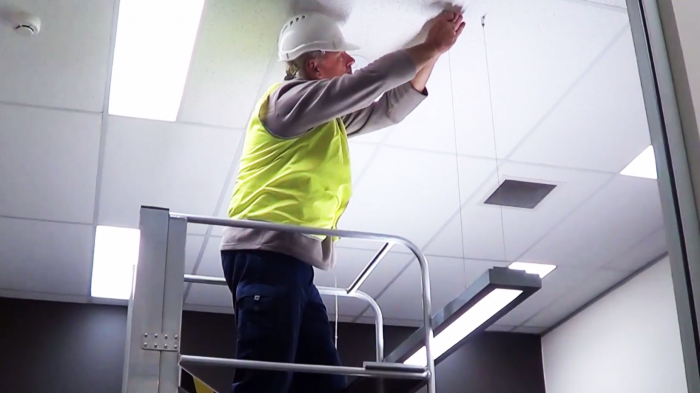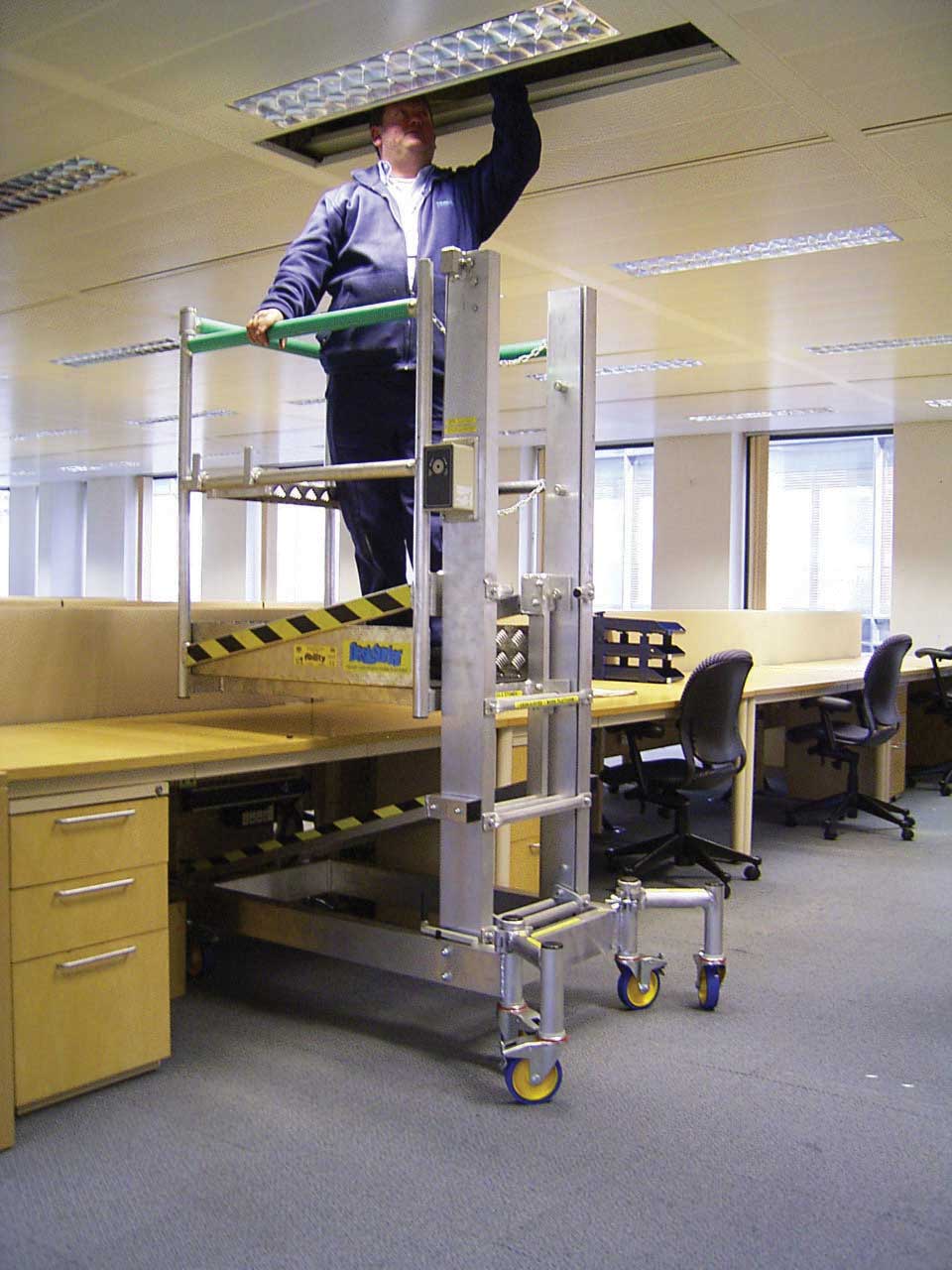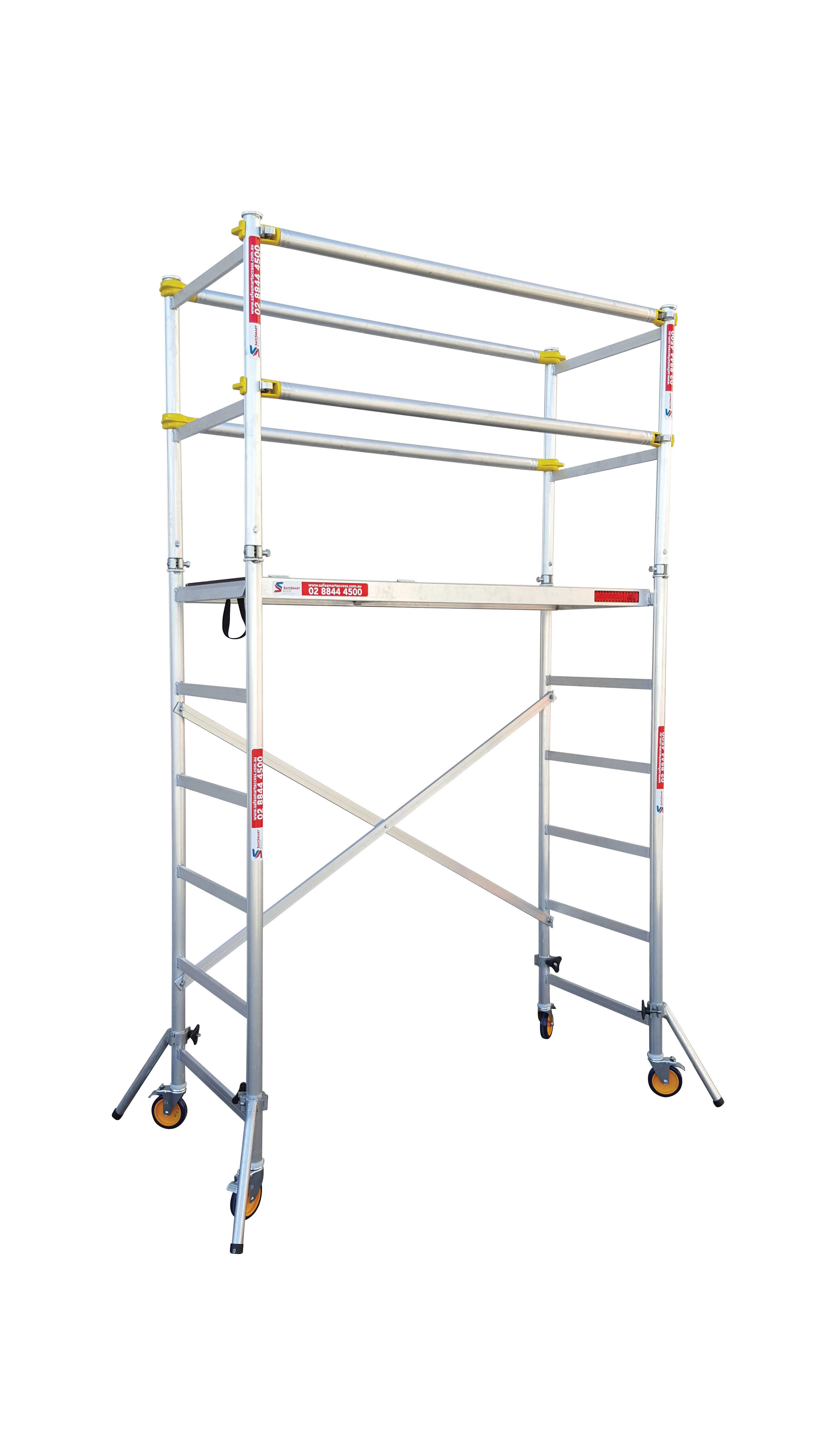Height Access in Small Spaces

Keeping Safety Right at Tight Height
The term ‘working at height’ is often associated with trades like high and low rise construction, window cleaning, telecommunications tower works, painting and the like. And the equipment used for doing these jobs has been developed into being more and more compliant over many decades, from scaffolding to more customized work platforms.
But what about performing work tasks in internal spaces? There are many trades that need to access heights indoors and in small spaces. In commercial buildings, the height of the ceiling—in lobbies, loading areas and performance spaces, for example—can be disproportionate to the room’s floor area. But those high ceilings or walls will still have lighting and services to attend to, and maintenance such as painting may still need to be done.
In interior works areas, the standard ladder is the most commonly-used option. This also applies to high-density residential structures.
The dangers of ladders are widely reported, like a recent accident in Calgary, Canada, where a window cleaning contractor fell approximately four metres from a ladder while washing the windows inside a residential complex. The man was taken to hospital with life-threatening internal and external injuries.
Why does this type of accident still occur in interior locations? Commercial and business properties are workplaces themselves. And activities such as maintenance, renovation or cleaning can cause disruption to the work occurring that the building is leased for. Therefore, contractors feel the pressure to get in, do the job and get out again in the shortest time possible. And this usually involves the most portable height access solution possible: ladders and step ladders.
Challenges arise in this situation. Office furniture may not be able to be moved, uneven surfaces such as stairwells may be the only point of access to the work area, and difficulty with bringing more appropriate equipment into the building due to door widths or steps may tempt a contractor into unsafe practices—overreaching, leaning from the side of a ladder, or simply standing on furniture or railings—that could result in injury or death.
Modern-day height access equipment companies are recognizing these challenges now, and are developing products which bring the strength, compliance and effectiveness of outdoor-style scaffolding and work platforms to interior environments.
This Desksurfer Maxi, for example. Standard ladders, besides platform ladders, do not offer any edge protection, nor do they allow for ceiling access without moving furniture. This product does.
The Desksurfer’s C-shaped cantilever design allows the feet and castors to be placed under desks and other hip-height obstacles, so tasks like air-conditioning maintenance and light bulb changes can be done with minimal disruption to the office. And the 650mm-wide platform allows the unit to be manoeuvred through standard-sized doorways. Add to this its compact size, either collapsed or fully extended, means that it fits into most elevators. Now, you have a compliant, quick and easy way for getting internal building maintenance done with a greatly-reduced risk of injury or financial compensation claims.

From a renovation point of view, access to heights on internal walls can also present danger. Whether it’s in a commercial or residential building, jobs that require a worker to stay at height for long periods of time can present dangers with traditional means of getting up there – planks placed over saw horses, or repetitive scaling of a ladder. Planks are almost never tested for structural integrity, and cannot be proven from an engineering or compliance point of view regarding their weight rating.
But the use of this type of system still occurs. Again, there are options. See this Mini Mobile scaffold from Saskatchewan company SafeSmart Access.
Like the Desksurfer Maxi, the base unit of this hand-manoeuvrable scaffold can be pushed through standard-width doorways, to allow the same type of height access as someone working externally would experience. The platform features a 225kg weight rating—perfect for keeping paint tins, tools and more at hand—and is compliant with regulations set out by CCOHS and other regional safety bodies.
To maintain the all-round edge protection functionality at the top, access is gained from below via a hatch. The unit also customizable by adding an all-terrain stair pack, giving the worker safe access to heights at the top of stairwell voids to maintain lighting, fans or anything else.

And if the Mini Mobile isn’t compact enough, see the SafeDeck Compact option. With a platform height of 1.2m and again, a 225kg weight rating, this is perfect for jobs that need to be done internally, at height, and at various points around the space.
All of these options are easy to store, which makes them a perfect proposition for ownership by the company or contractor – simply get the job done fast and get out of the way. And for a contract involving repeated visits, a unit can stay on site at all times.





